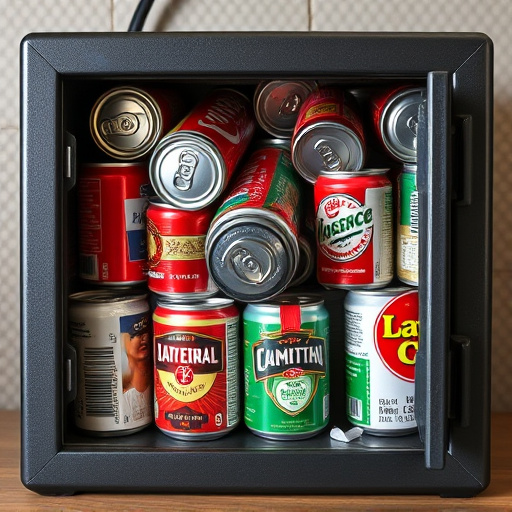Fake soda cans serve as innovative, discreet hiding spots for valuable items, blending seamlessly into everyday environments. These cleverly designed replicas offer both practical and creative solutions for stashing objects in plain sight, with key design elements ensuring functionality, realism, and durability. Advanced techniques make these hidden compartments virtually indistinguishable from real cans, providing secure storage for travelers and those in compact spaces.
In today’s digital era, security and discretion are paramount. One innovative solution gaining traction is the covert storage system, exemplified by hidden compartments within seemingly innocuous objects like fake soda cans. This article explores the concept of these systems, focusing on “fake soda can hiding spots” as a design element. We’ll delve into key aspects, including practical applications and security measures, to provide insights into this intriguing game-changer in product design.
- Understanding the Concept: Unveiling Fake Soda Can Hiding Spots
- Design Elements for Covert Storage Systems
- Practical Applications and Security Measures in Fake Product Design
Understanding the Concept: Unveiling Fake Soda Can Hiding Spots
In the realm of covert storage systems, the design of fake products serves as a clever and often underutilized tactic for hiding secrets. Among these fake items, the seemingly innocuous fake soda can has emerged as a surprising yet effective hiding spot. These cleverly designed cans are not just for display; they offer an imaginative solution for discreetly stashing small objects or sensitive information. By mimicking real soda brands, these fakes blend seamlessly into everyday environments, making them ideal for both practical and creative purposes.
Understanding the concept behind fake soda can hiding spots involves recognizing their versatility. Whether it’s a retro-themed soda can disguised as a vintage collectible or a modern replica designed to look like a common beverage, these fakes provide an unseen and unexpected storage solution. This innovative approach allows users to store items in plain sight, ensuring discreteness while still offering easy accessibility.
Design Elements for Covert Storage Systems
When designing a covert storage system, especially for hidden compartments in everyday objects like a fake soda can hiding spot, several key elements come into play. The first consideration is functionality; the compartment must be accessible yet disguised as an ordinary item. This often involves intricate cutting and carving to create a hollow space within what appears to be a regular object. For instance, a replica soda can with an internal cavity large enough to store small items provides both realism and secrecy.
Material choice is another critical aspect. The material used should not only match the surrounding environment but also be durable and able to withstand different conditions without raising suspicion. Plastic or metal can be employed depending on the desired level of authenticity and the item’s intended purpose. Additionally, incorporating subtle design details that mimic real-world features, like seams or labels, adds realism to the fake product, making it less noticeable as a hidden storage space.
Practical Applications and Security Measures in Fake Product Design
In the realm of covert storage, designers often draw inspiration from everyday objects to create hidden compartments—a prime example being the ingenious use of a fake soda can hiding spot. This design tactic leverages the mundane against itself, transforming an ordinary container into a secret sanctuary for valuable items or sensitive materials. The practical applications are vast, ranging from personal safety and security to creative solutions in space-constrained environments. For instance, travelers might hide travel documents or cash within these concealed spaces, ensuring their belongings remain secure during transit.
Security measures play a pivotal role in successful fake product design. Crafters employ sophisticated techniques to make these hidden spots nearly indistinguishable from their real counterparts. This includes intricate fabrication, realistic painting, and the use of materials that mimic the properties of regular cans or packaging. By integrating advanced anti-tamper mechanisms, such as specialized locks or security inks, creators add an extra layer of protection, ensuring the safety of the concealed contents. These clever designs demonstrate how ordinary objects can be reimagined to serve extraordinary purposes.
Covert storage systems, exemplified by their application in fake soda can hiding spots, offer a fascinating blend of design innovation and security enhancement. By integrating discreet yet efficient storage solutions into everyday products, these systems provide creative ways to safeguard valuable items while maintaining aesthetic appeal. As discussed, thoughtful design elements, combined with robust security measures, are key to successful implementation. Whether for personal safety or business needs, understanding and leveraging these systems can significantly boost security across various environments.
